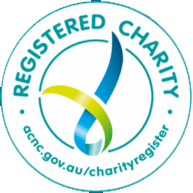
PCYC is passionate about empowering young people and helping them get active, discover why kids should be more active and how we can get them moving.
As a nation we have become very sedentary, and our health is suffering. The onus is now on older generations to help the youth of today establish good exercise habits that they can carry into adulthood.
We’re looking at why young people need to exercise, and what we can do to get them active.
Why young people need to exercise
Exercise has a multitude of great benefits for young people:
- Health into adulthood – Children who exercise have a lower risk of obesity and chronic disease, including diabetes, cardiovascular disease. Active children are also more likely to be active as adults.
- Boosting self-esteem – Research on thousands of children consistently shows that exercise improves their self-worth, self-esteem and body image.
- Providing social contact – Exercising gives young people an opportunity to make friends and, if they like team sports, this is a great way to learn to work and cooperate with other people.
- Improving mental health – It’s well established that exercise promotes good mental health in young people. Studies link inactivity (and prolonged screen time) with increased depression and anxiety in children.
- Better performance at school – Exercise has been found to activate a child’s brain and improve mental performance, particularly in the areas of maths and reading.
- Increase vitamin D – Spending time outside increases your child’s vitamin D levels, essential for bone health and strong immunity. However, be careful to use sunscreen and a hat during the middle of the day and when the UV index is high.
How to get your child off the couch
Currently, most children and teenagers fall well short of health guidelines for exercise. According to the Department Of Health, only one in ten young Australians meet the recommendations of at least 60 minutes of exercise every day, according to Department of Health statistics.
The key to motivating a young person to start exercising and maintain it is to find something they really enjoy. Not everyone likes team sports – some prefer a less competitive activity, so it’s worth discovering what suits your child’s personality style.
Children also learn from their parents and carers, so getting involved in sport yourself helps to encourage them.
5 Great exercise activities for kids
As well as PE and sport at school, your child might want to try something a bit different outside of school hours. Take a look at these alternative activities that your child could try:
1. Gymnastics
Gymnastics is a fun way to get fit and improve flexibility. Children can feel the reward of being challenged to try new things they didn’t think they could achieve.
Most local gymnastics clubs usually provide recreational programs plus more competitive gymnastics depending on what your child prefers.
2. Ice skating
Find a local ice skating rink for an enjoyable skate around. If your child is keen, most rinks offer figure-skating lessons. If they like team sports, some rinks also have ice hockey clubs.
3. Trampolining
If you can invest in a trampoline, it’s a great way for kids to easily get away from the computer and have a bounce.
You can also take your child to your local trampolining centre for lessons or to enjoy with their friends on weekends and in the holidays.
4. Climbing wall
Climbing walls build physical strength and confidence, and is something the whole family can get involved in. Some of our PCYC NSW clubs offer indoor rock climbing too!
5. Boxing
Boxing builds strength, stamina and discipline and many boxing clubs including PCYC NSW accept young people now.
Free kids activities
If these activities aren’t taking your child’s fancy, or you’re worried about the cost implications of a new hobby, then there are plenty of free activities that young people can enjoy. Why not encourage your child to take up:
Running
For young people who don’t enjoy competitive sports, running is a great option to try.
Charitable organisation Parkrun offers free weekly 5K runs for all ages in parks all over Australia. All you need to do is register online beforehand.
Dog walking
Young people can get involved in their local community and get exercise at the same time by volunteering for dog walking. If your child isn’t the sporty type, walking is a very valid exercise – research shows that just 20 minutes of walking significantly improves brain activity.
They can either offer to walk the neighbour’s dog or volunteer to help out at their local pet shelter.
YouTube
If your child isn’t keen to go outside, exercising indoors is better than not doing anything at all and can provide a good starting point to becoming more active. YouTube has many great exercise programs that young people can follow. It’s best to check that the fitness video they have chosen is appropriate for them first though, and per
haps even join in if you need some extra exercise from the comfort of your own home.
For more information on how to keep your child active, find your local club today.








